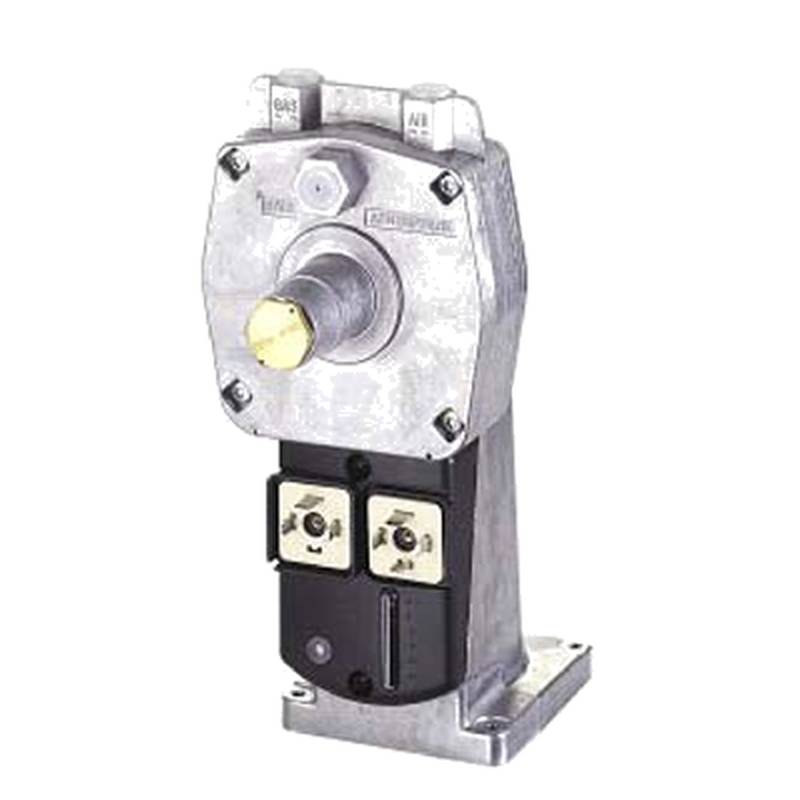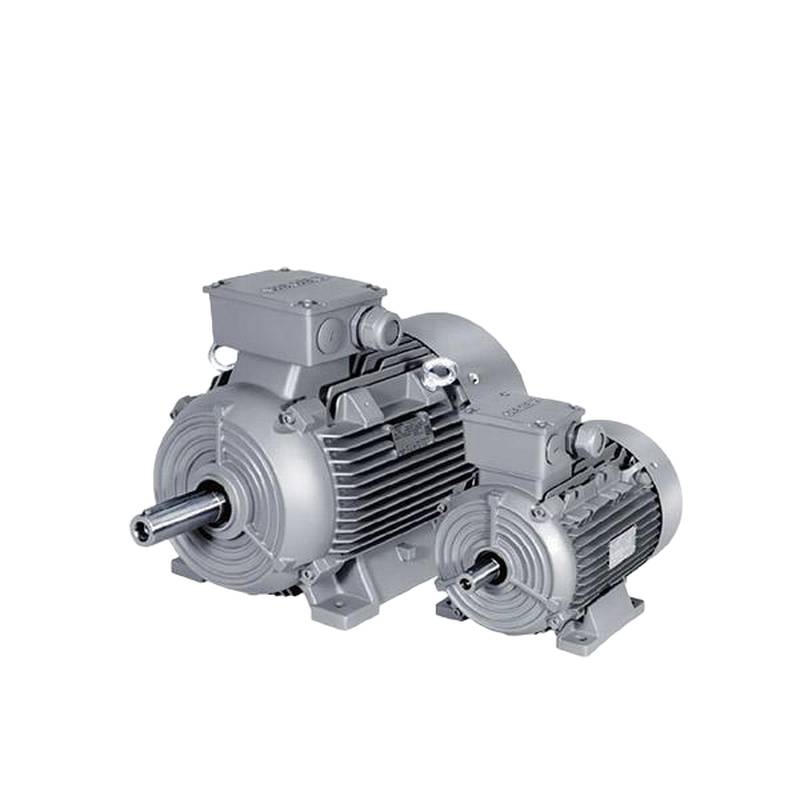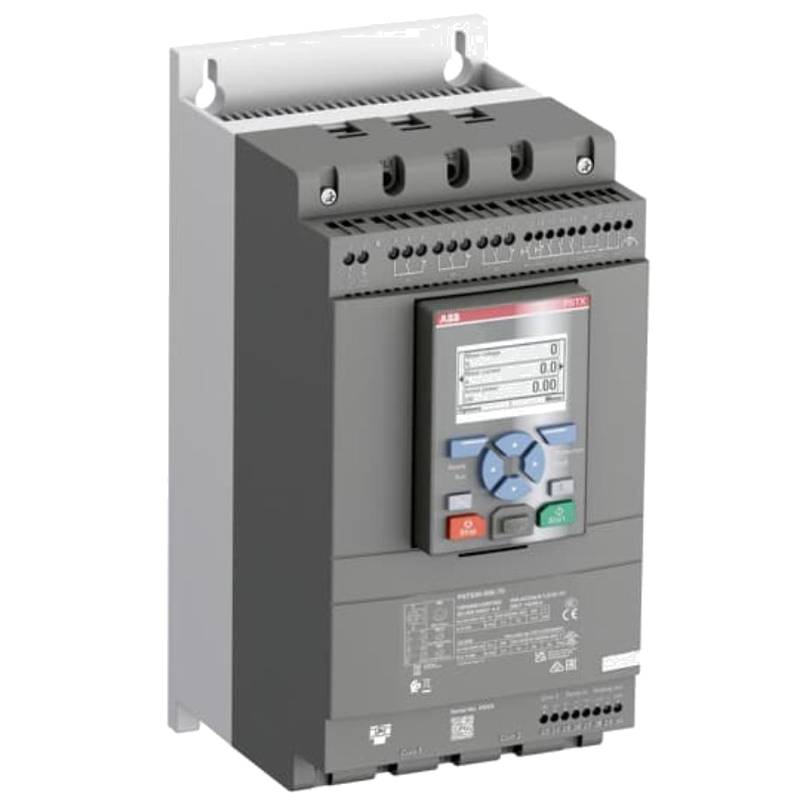
When you need precision, power, and reliability in industrial machinery, the Yaskawa SGDXS-7R6A00A8002 Standard Power Servo Drive stands out as a robust solution. This drive is a key component within Yaskawa's esteemed Sigma-X series, engineered to meet the demanding requirements of modern automation. It offers an impressive blend of advanced features, technical specifications, and application versatility, making it a go-to choice for integrators and manufacturers seeking to optimize performance and enhance productivity. The SGDXS-7R6A00A8002 is designed for seamless integration, providing superior control and ensuring the smooth, efficient operation of a wide array of industrial machinery.
Product Specifications
| Specification | Value |
| :----------------------------- | :---------------------------------------- |
| Model | SGDXS-7R6A00A8002 |
| Series | Sigma-X |
| Rated Output Power | 1 kW |
| Input Voltage | 200-230V AC |
| Output Current (Rated) | 7.6 A |
| Output Current (Peak) | 17 A |
| Maximum Speed | 3000 rpm |
| Encoder Resolution | 1000, 2500, 5000, 10000, 20000 pulses/rev |
| Communication Interfaces | RS422A, USB 2.0 |
| Safety Function | STO (SIL3, PLe) |
| Operating Temperature | -5°C to 55°C |
| Operating Humidity | 35% to 85% (non-condensing) |
| Protection Class | IP20 |
| Speed Frequency Response | 3.5 kHz |
| Tuning-less Capability | Up to 100:1 inertia mismatch |
| Data Collection | ∑-LINK II for process visualization |
| Control Type | Pulse/Analog |
| Compatibility | Yaskawa servo motors (rotary, linear, direct drive) |
Core Features & Market Positioning
The Yaskawa SGDXS-7R6A00A8002 is positioned as a high-performance servo drive that champions ease of use and exceptional control precision. Its integration into the Sigma-X family signifies a commitment to advancing servo technology. Key differentiators include an industry-leading 3.5 kHz bandwidth, which significantly enhances settling times and overall machine throughput. The "tuning-less" capability is a standout feature, allowing for reliable automatic tuning even with a significant load to rotor inertia mismatch up to 100:1, drastically reducing commissioning time and effort. This positions the SGDXS-7R6A00A8002 as a highly competitive solution for applications where rapid deployment and robust performance are critical. Furthermore, the drive's advanced algorithms for vibration suppression, speed ripple, and friction compensation ensure smooth, stable operation even under challenging conditions.
Key Application Scenarios
The versatility of the Yaskawa SGDXS-7R6A00A8002 servo drive makes it suitable for a broad spectrum of industrial automation tasks. It excels in applications demanding high precision and dynamic response, such as:
Packaging Machinery: Ensuring precise movements for filling, sealing, and labeling operations. Semiconductor Manufacturing: Providing the high accuracy and repeatability needed for micro-fabrication and assembly. Machine Tools: Delivering accurate positioning and smooth motion for CNC machines, milling, and turning centers. Robotics: Enabling precise and dynamic arm movements for assembly, welding, and material handling robots. Digital Printing: Facilitating accurate paper feeding and print head control for high-quality output. Timber Processing: Offering precise control for cutting, shaping, and material handling in woodworking applications.
Its ability to connect with Yaskawa's full line of rotary, linear, and direct drive servo motors further expands its applicability.
Practical System Integration Guidance
Integrating the Yaskawa SGDXS-7R6A00A8002 into an industrial system is streamlined by its design and Yaskawa's comprehensive support. The drive supports Pulse/Analog control interfaces, offering flexibility in system architecture. For advanced networking and synchronized motion, models supporting MECHATROLINK-4/III communications are also available. The Safe Torque Off (STO) function is standard, providing a critical safety feature compliant with SIL3 and PLe standards. Proper wiring of power, motor, and encoder connections is crucial. Consult Yaskawa's official installation manuals for detailed schematics and best practices, particularly regarding cable types, shielding, and grounding to prevent electrical interference and ensure optimal signal integrity. Commissioning is simplified by features like autotuning and tuning-less operation, which can be accessed and configured via Yaskawa's SigmaWin+ software or the digital operator.
Operation and Risk Mitigation
Operating the SGDXS-7R6A00A8002 involves understanding its control parameters and safety features. The drive is equipped with comprehensive protection mechanisms to prevent damage and ensure operational safety. Common fault codes, such as overspeed alarms, vibration alerts, and autotuning failures, are documented in Yaskawa's technical literature. For instance, an A.520 vibration alarm might indicate mechanical resonance or excessive load, requiring investigation into the machine's dynamics. The STO function is paramount for operator safety, enabling a rapid and reliable shutdown of motor torque in emergency situations. Regular maintenance, guided by the machine data collected by the amplifier, can help implement preventative practices, extending the life and performance of the machine and mitigating potential risks.
Scalability & Long-Term Value
The Yaskawa SGDXS-7R6A00A8002 offers significant long-term value through its scalability and compatibility. As part of the Sigma-X series, it represents the latest evolution in Yaskawa's motion control technology, building upon the proven reliability of previous generations like Sigma-7 and Sigma-5. This backward and forward compatibility ensures that it can integrate with existing Yaskawa components and future upgrades. The drive's ability to collect machine data via ∑-LINK II facilitates integration with Industry 4.0 initiatives, enabling predictive maintenance and performance analysis. This data-driven approach allows for continuous optimization, enhancing the overall return on investment and future-proofing the automation system.
Frequently Asked Questions
What is the primary function of the Yaskawa SGDXS-7R6A00A8002 servo drive?
The primary function of the Yaskawa SGDXS-7R6A00A8002 is to precisely control the speed, position, and torque of servo motors in industrial machinery. It acts as the "brain" for servo-driven applications, translating control signals into motor commands.
This drive ensures accurate and dynamic motion control, crucial for tasks requiring high precision and responsiveness. It is designed to enhance machine performance, improve product quality, and increase manufacturing efficiency across various industries.
Its advanced features, such as high bandwidth and sophisticated tuning algorithms, allow for optimized motor performance and reduced settling times. This makes it ideal for demanding automation tasks where speed and accuracy are paramount.
What are the key technical advantages of the Yaskawa SGDXS-7R6A00A8002?
A key advantage is its high speed frequency response of 3.5 kHz, which allows for faster response and improved settling times. The "tuning-less" capability, enabling automatic tuning with inertia mismatches up to 100:1, greatly simplifies setup.
The drive offers advanced vibration suppression, friction compensation, and load fluctuation compensation for smoother, more stable operation. It also provides valuable machine data collection for performance monitoring and predictive maintenance.
Standard inclusion of Safe Torque Off (STO) functionality, compliant with SIL3 and PLe safety standards, enhances operational safety. Its compatibility with Yaskawa's diverse range of servo motors (rotary, linear, direct drive) adds significant versatility.
In which industrial applications is the Yaskawa SGDXS-7R6A00A8002 most effectively utilized?
This servo drive is highly effective in applications requiring precise motion control, such as packaging, semiconductor manufacturing, and machine tools. It is also well-suited for high-speed robotics and digital printing systems.
Its ability to handle dynamic loads and ensure accurate positioning makes it ideal for automated assembly lines, material handling systems, and processing machinery. The drive's performance characteristics are beneficial in industries where efficiency and precision directly impact output quality.
The SGDXS-7R6A00A8002 is also valuable in applications where minimal downtime and easy commissioning are critical, thanks to its advanced tuning features and robust design.
How does the Yaskawa SGDXS-7R6A00A8002 facilitate system integration?
The drive supports standard Pulse/Analog control interfaces and offers optional MECHATROLINK-4/III communication for networked systems. Its compatibility with Yaskawa's machine controllers streamlines integration into broader automation solutions.
Configuration and setup are simplified by features like autotuning and tuning-less operation, often managed through Yaskawa's SigmaWin+ software or the digital operator. This reduces engineering time and complexity during system implementation.
Its compact design and STO safety feature further aid integration, allowing for easier panel layout and compliance with safety regulations.
What are the main safety features of the Yaskawa SGDXS-7R6A00A8002?
The most prominent safety feature is the integrated Safe Torque Off (STO) function, which meets SIL3 and PLe safety integrity levels. This function reliably prevents unexpected motor movement by disconnecting torque.
The drive can also be integrated with advanced safety modules that offer a wider range of safety functions like Safe Stop 1 (SS1), Safe Stop 2 (SS2), and Safely Limited Speed (SLS) when used with compatible Yaskawa safety options.
Its robust design and adherence to industrial safety standards contribute to overall system safety. Proper installation and adherence to operating procedures are essential for maximizing these safety benefits.
How can users troubleshoot common issues with the Yaskawa SGDXS-7R6A00A8002?
Troubleshooting typically involves consulting Yaskawa's error code lists and manuals, which detail potential causes and corrective actions for alarms. Common issues may relate to wiring, power supply, or motor compatibility.
Specific error codes, such as A.510 (Overspeed) or A.520 (Vibration Alarm), can guide diagnosis. For example, an overspeed alarm might require checking the motor's speed limits or the command signal.
If persistent issues arise, it is advisable to check parameter settings, ensure correct motor-drive matching, and verify encoder connections. For complex problems, contacting Yaskawa support or a certified technician is recommended.
What is the role of data collection and IIoT integration with this servo drive?
The SGDXS-7R6A00A8002, through its ∑-LINK II capability, can collect critical operational data such as energy consumption, temperature, and vibration levels. This data is vital for monitoring machine health and performance in real-time.
This data facilitates the implementation of predictive maintenance strategies, allowing for scheduled maintenance before failures occur, thereby minimizing downtime and extending equipment lifespan. It is a key element for integrating into IIoT platforms and smart factory initiatives.
By providing insights into machine operation, the drive supports continuous improvement processes, optimization of production cycles, and enhanced overall equipment effectiveness (OEE).
Can the Yaskawa SGDXS-7R6A00A8002 be used with different types of Yaskawa servo motors?
Yes, the SGDXS-7R6A00A8002 is designed to support Yaskawa's full range of servo motors, including rotary, linear, and direct drive types. This broad compatibility allows for flexibility in application design.
Matching the servo drive to the specific motor requirements (power, speed, torque) is essential for optimal performance. Yaskawa provides resources and tools to help select the correct motor and drive combination for any given application.
This interoperability ensures that users can leverage Yaskawa's extensive motor portfolio to meet diverse motion control needs, from high-precision positioning to high-torque dynamic applications.
What are the typical commissioning steps for the SGDXS-7R6A00A8002?
Typical commissioning involves physical installation, electrical wiring (power, motor, encoder, I/O), and then software configuration. The drive's autotuning and tuning-less features significantly simplify the tuning process.
Initial setup often uses Yaskawa's SigmaWin+ software for parameter configuration, motor setup, and initial motion testing. The digital operator can also be used for basic setup and monitoring.
After initial tuning, testing basic motion commands and verifying performance against application requirements is crucial. Safety functions, like STO, should also be tested to ensure proper operation.
What is the significance of the 3.5 kHz bandwidth feature?
The 3.5 kHz bandwidth signifies the drive's ability to respond rapidly to changes in command signals and load conditions. A higher bandwidth allows for faster acceleration, deceleration, and settling times in servo applications.
This enhanced responsiveness leads to increased machine throughput and improved accuracy in high-speed movements, such as in pick-and-place operations or rapid positioning tasks. It minimizes vibration and overshoot, contributing to smoother and more stable motion.
For complex machinery, a higher bandwidth ensures that the servo system can accurately follow dynamic trajectories, crucial for maintaining precision in demanding automated processes.

























